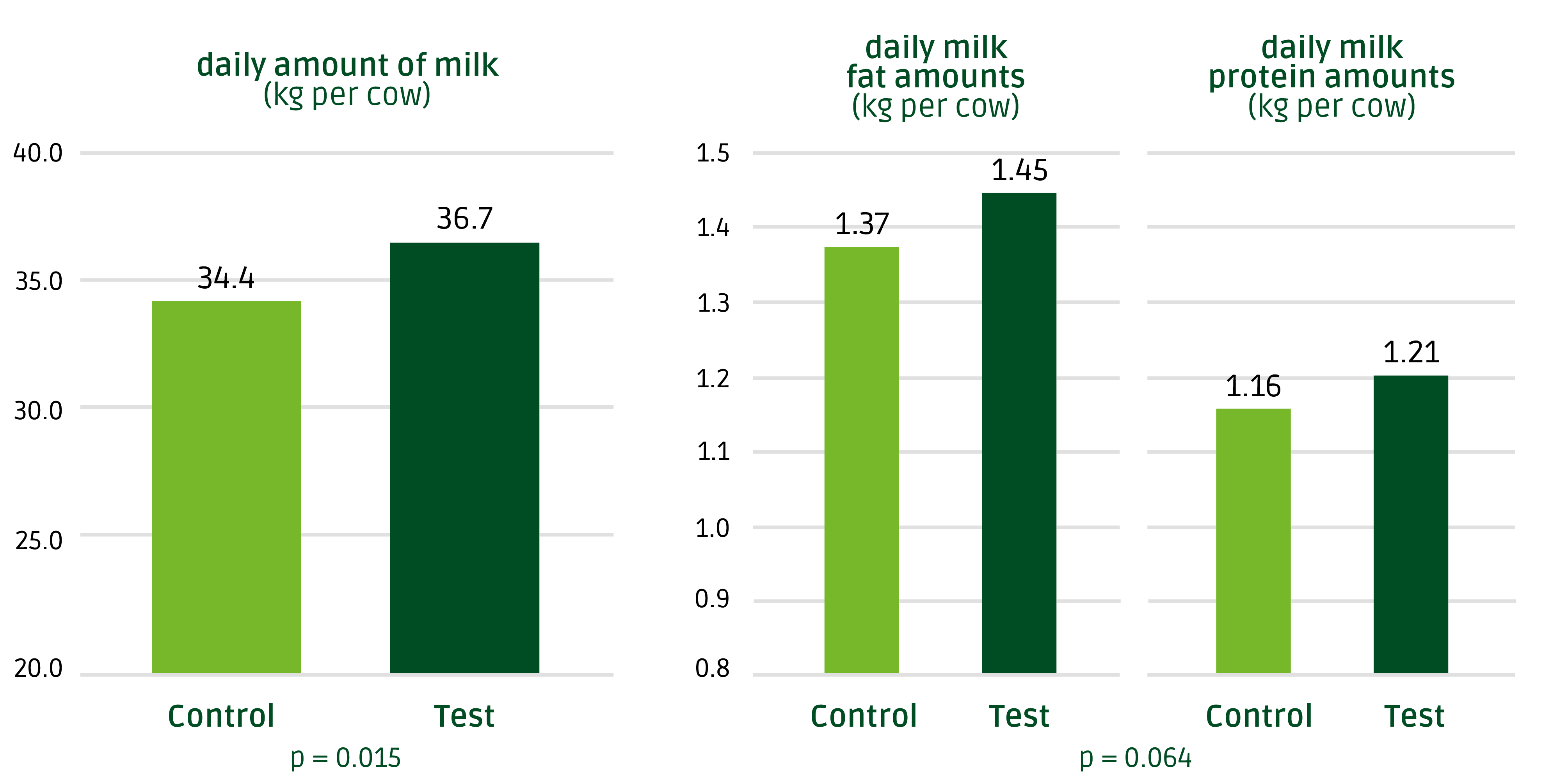More milk and constituents due to protected amino acids
In the recent years dairy farmers have been able to continuously increase the performance of their dairy cows. Improved genetics and also the further improvement of housing conditions have contributed to this. With this improvement in milk yield, a needs-based supply of energy and protein, among other things, through feeding is more important than ever.
High-yielding dairy cows need amino acids
Changes in the general conditions on the cost side, but also on the revenue side, as well as the tightening of fertilizer and environmental legislation are increasingly directing attention to the sustainable utilization of nutrients. Feed and, above all, protein (nitrogen) utilization efficiency are playing an increasingly important role in dairy production. Improving these is worthwhile from the point of view of profitability and reduction of nitrogen emissions. Various publications deal with the reduction of crude protein levels in the ration and subsequent amino acid supplementation. Here, methionine is primarily added as the first-limiting amino acid, followed by lysine as the second-limiting amino acid. The aim here is to cover the amino acid requirement in order to avoid performance losses due to a feed reduced in crude protein.
Feedback from the field shows that protein (nitrogen) can be saved in this way. At the same time, improvements in health status and oestrus behavior were visible.
Improving protein, energy and fat metabolism
In practice, a reduced crude protein supply (approx. 160g XP or nXP/kg DM) has become widely accepted. High-yielding dairy cows often have a negative nutrient balance at the beginning of lactation. The physiological nutrient requirement for milk yield cannot be covered by feed intake. A further reduction in crude protein (below 160g/kg DM) in the feed ration would in this case exacerbate the negative nutrient balance and would potentially result in performance losses or health impairments.
Conversely, in this situation, protein, energy and fat metabolism can be improved by supplementing amino acids (methionine and, in some cases, lysine) at a protein supply level of 160g/kg DM.
Practical test: 2.3 kg more milk due to optimized protein supply
In a high-yielding Holstein-Friesian herd (130 cows, 10,500kg milk/cow per year), a parallel study over seven consecutive milk controls secured an increase in milk yield of 2.3kg/day (Fig. 1). The total ration had a protein level of 160g/kg DM. All cows were fed a corn silage-based ration with supplementation of brewer’s grains, rapeseed extraction meal, DDGS and corn gluten feed during the period. The appropriate amount of BEWI-FATRIX® LM 101 was additionally allocated to the test group via the concentrate on the robot.
Fig. 1 Milk yield and milk constituents with BEWI-FATRIX® LM 101 (Hovenjürgen, 2021).
Conclusion: an addition of amino acids has several positive effects!
The optimized supply of amino acids in the cow’s small intestine also makes it possible to improve milk yield and milk constituents in most rations. Results from practice confirm this. The effects on milk and milk fat yield confirm the positive effect of amino acid supplementation on energy and fat metabolism. In addition to the significantly improved profitability, there is also the potential for reductions in nitrogen and phosphorus excretion, which increases the efficiency in the dairy cow husbandry.